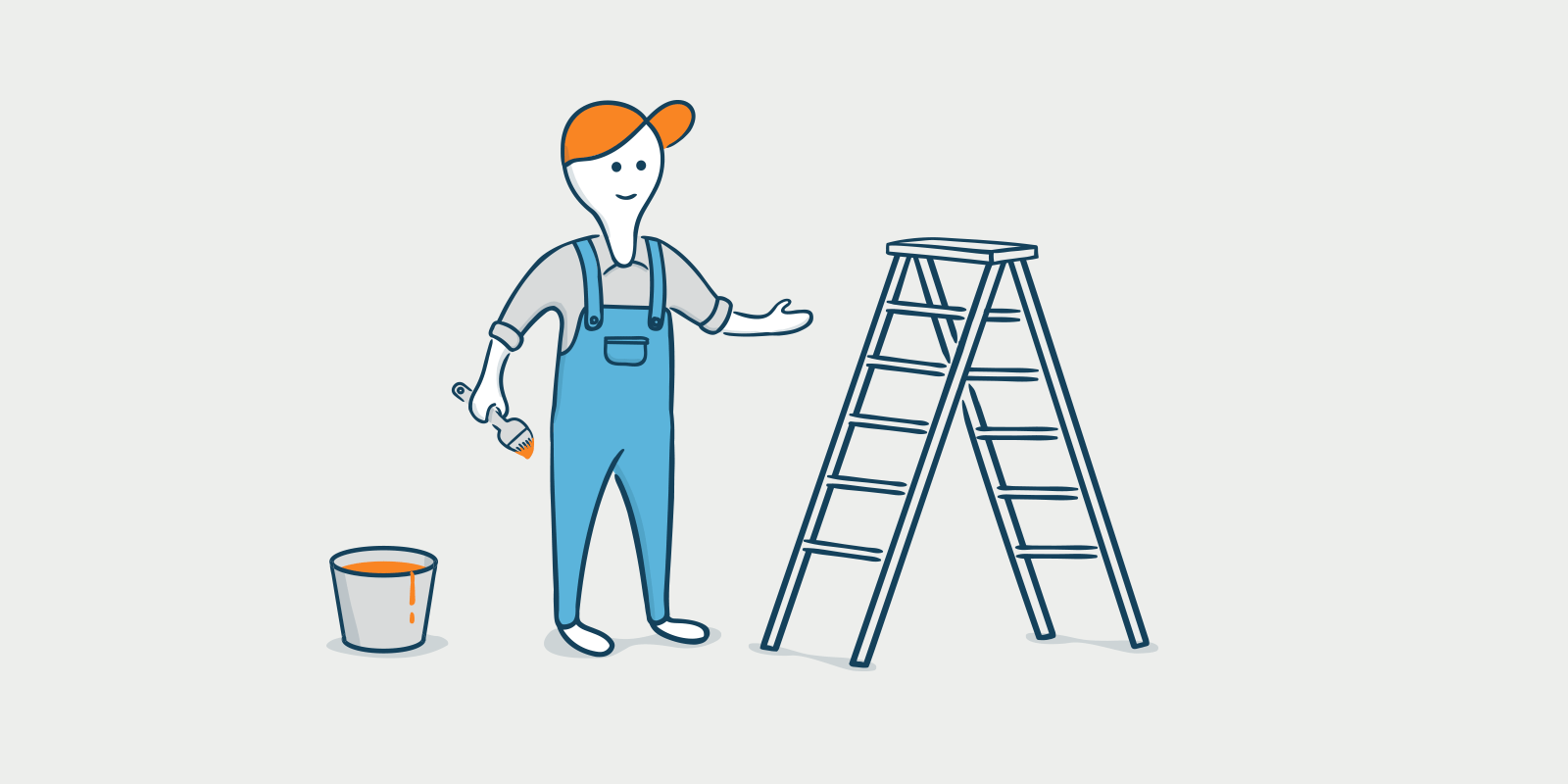
Your rental property is a long-term investment, so you must take care of it well. It’s a big mistake to leave this job to tenants, as it is not their job. Yes, it’s their job to keep the property clean. And you might have stipulated in the contract that they keep the garden maintained. But aside from that, it’s not their job, and you’ll be lucky to find a tenant that is either a capable or willing handyman.
But how do you take care of your rental property so that your little pot of gold doesn’t turn into a costly nightmare down the line? Here are our top tips to stay on track.
Carry out regular maintenance for happy tenants and nip potential problems in the bud
Not carrying out regular maintenance is a mistake made by many landlords. They think that they should only make upgrades and maintenance in between tenancies. If you are lucky enough to have a tenant who has stayed three years or more, you risk losing them if you don’t offer to start painting and addressing other issues such as worn carpets, floors, and furniture.
Many tenants will move on to a new property in pristine condition, leaving your property behind. You’ll then be left with upgrading the property and having to find new tenants. So always get in touch with your tenants regularly and OFFER rather than having to be asked to maintain YOUR property. Don’t let those amazing long-term tenants move on because you didn’t look after them and your property.
Types of regular inspections
We have talked about regular inspections several times in previous blogs, and they are so important, but you do need to tread carefully.
While, yes, it’s your property that belongs to you, once your tenants move in, it’s their home, and you need to respect their privacy. If you start making a nuisance of yourself, few tenants will stand for it and will move on.
There are four types of inspections:
Move-in inspection: The move-in inspection allows you and the tenant to make a documented note of the property’s condition. This is when you can detail if items are new, nearly new, or older.
Drive-by inspection: It’s possible to have a sneaky check of your property by just driving by. It can’t spot much, but you might be able to see if the garden is being maintained or if there is an unauthorised pet exercising.
Regular inspection: Most good tenants are more than happy for you to come over every three months, as long as the appointment is arranged. This allows the tenant to point out any slight issues without feeling they are being petty. It also gives you peace of mind that the property is being looked after. And it allows you to make sure no disasters happen, such as a fire occurring without working smoke alarms.
Moving out inspection: A moving out inspection can allow you and the tenant to agree on fair wear and tear. It’s also an opportunity for the tenant to agree that they may have caused some slight damage by accident. For example, your tenant can come clean and say that yes, the hair straighteners did burn the new bedroom carpet, and they are happy for that carpet to be replaced with funds from their deposit.
Regular maintenance checklist
So having established a schedule to inspect the property, what should you be looking for when you do? The key aim of these inspections (aside from checking that the property is clean and there aren’t any four-legged tenants that have moved in against your stipulations) is to check on any minor issues that could lead to potential disasters if left.
Tenants are often young and/or have never owned property, so they simply don’t know about many issues that you as a property owner should know about. Or they might think that any problems are too small to bother you about. Then before you know it, that tiny leak or patch of mould has created an expensive problem.
The checklist of things will vary, but here is a typical list.
- Testing the smoke and carbon monoxide detectors is perhaps the most important
- Check fire extinguishers
- Check for pests
- Trim back or remove trees that could fall on the property during a storm
- Clean debris from guttering
- Check for leaks, especially following floods or melting snow
- Flush the water heater
- Replace air filters frequently
- Tighten handles, knobs, locks, faucets, etc.
- Re-caulk showers and bathtubs to prevent mould
Create a maintenance schedule for larger jobs
It’s also essential to have a realistic view of maintenance work. Typical smaller houses that make ideal good value rentals should not be furnished with high-end fixtures and fittings. As such, you can’t expect carpets and floors to last longer than three years. A good value sofa will also need replacing, and walls need to be repainted after three years.
So, for example, if you repainted when your tenant moved in, but the carpets and floors were a year old, you’ll need to replace the floors two years after your tenants moved in. And the walls will need repainting on the third anniversary of your tenants moving in.
By doing this, you are effectively spreading your costs, so you are never left with a mammoth and expensive task of completely refurbishing all at the same time. And imagine how happy your tenants will be when the property is revamped and made new for them every year? After replacing the carpets one year, you can tell them you’ll be back to repaint the year after. And let them know the year after, you’ll be upgrading the kitchen with at the very least new door and cupboard fronts as well as surfaces. It’s definitely an excellent reason for them to stick around.
Budgeting for maintenance
So how do you go about budgeting for maintenance? The money for maintenance obviously comes from the rental income and certainly not from your tenant’s deposit. That deposit should be safely put away in a scheme.
There are a couple of ideas for how much you should put away, but every property is different. If you have invested in a newly built apartment, this is likely to take far less maintenance than an older terraced house. You might know that your property needs a new roof in ten years, and so effectively, you need to start saving for that.
The 1% rule suggests that you should put away 1% of the property’s value every year, which would be £1000 for a £100,000 property. There is also the 50% rule which suggests you should save half of the rental value for maintenance. It’s reasonable to expect a monthly rent of around £600 for a £100,000 property on average. So, that would mean you put away £3600 by putting away £300 each month. The figures are very different, so you need to use common sense to decide how much you save. Always air on the side of caution, especially if you don’t have other funds to dip into, should you be hit with significant maintenance costs.
Taking care of your property: Things to remember
If you take all these points on board, you should be able to take good care of your property with no nasty and costly surprises. Here’s a quick rundown of the main points.
- Make sure you carry out regular checks so that your tenants have a comfortable home and minor problems don’t become big issues
- Carry out regular inspections when tenants move in and leave. You can also inspect the property by driving by, but also schedule a routine check every three months and after any bad weather
- Take a closer look at the maintenance checklist, but ensure you check smoke and CO2 detectors, fire extinguishers, as well as clearing guttering and checking for leaks, pests and other potential issues.
- Understand that many items will need replacing every three years and create a schedule that will spread your costs and keep your tenants happy
- Budget for your costs by deciding on a percentage of your rental income for this



 Protect the environment. Reduce paper consumption and help save the trees as well as save money at the same time.
Protect the environment. Reduce paper consumption and help save the trees as well as save money at the same time. 
